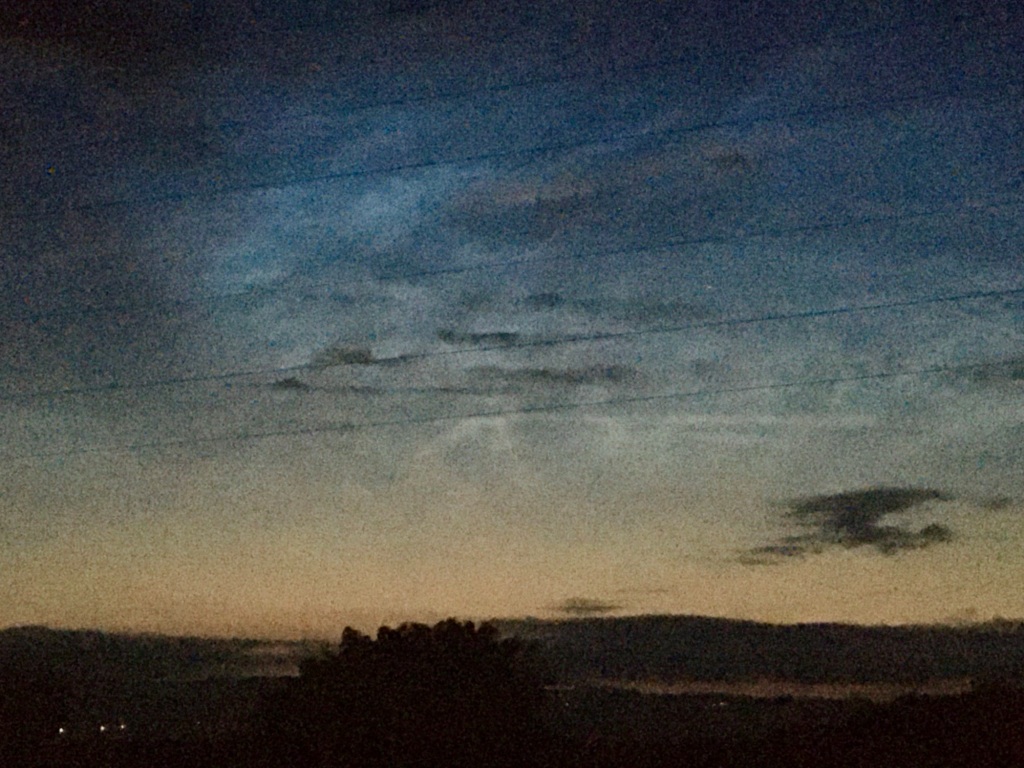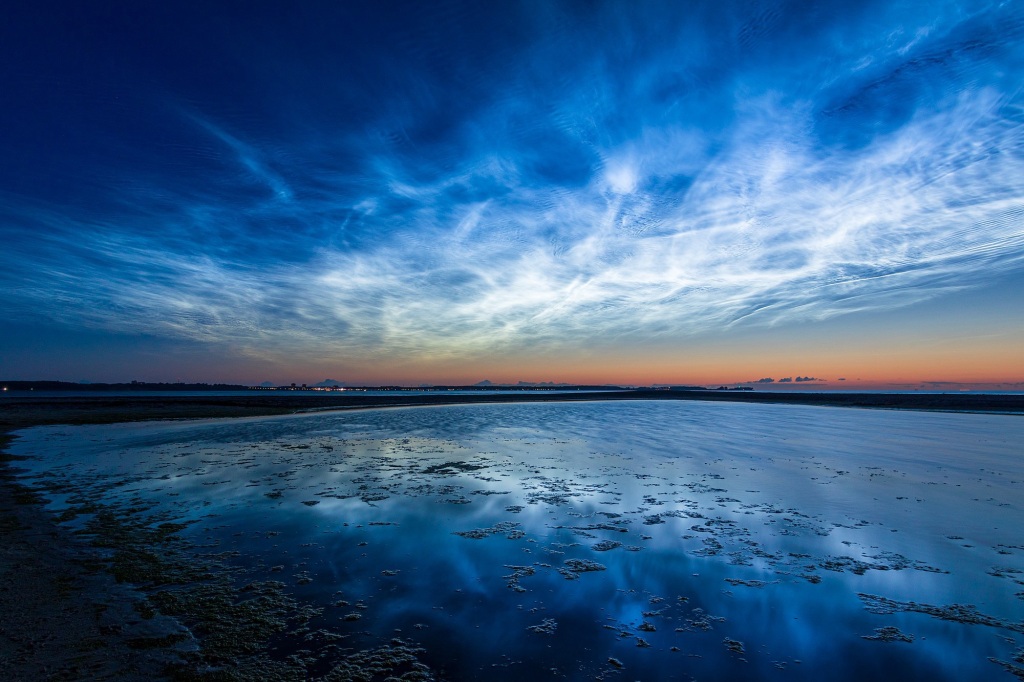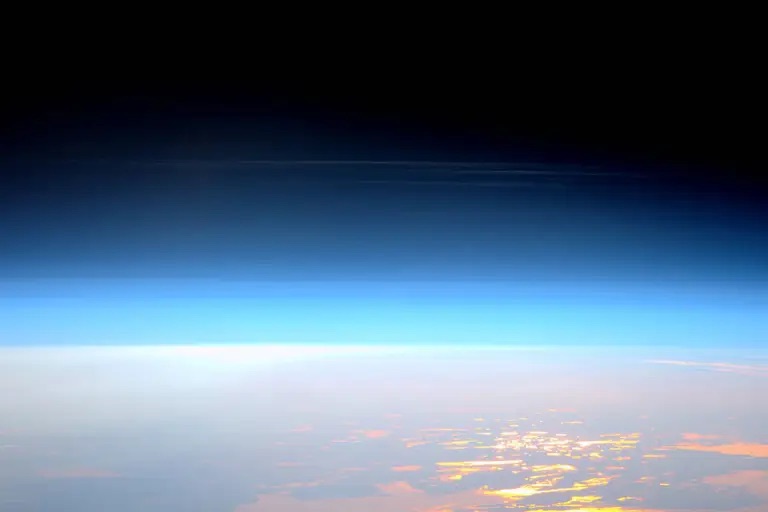
(shot in June 2022 by author)
So far this year we haven’t really been blessed with that many cloudless nights but the few we have had did provide us with some opportunities to espy spectacular night-sky phenomena such as the Aurora borealis a few weeks ago. That display was an absolute boon for photographers and astronomers, especially those who combine the two in the increasingly trendy art of astrophotography.
This fascinating field of photography really took off during the Covid lockdown when the lack of plane contrails and decrease in overall air pollution, added to the fact that lots of people suddenly found themselves with plenty of spare time, meant that a lot of already creative people found themselves taking an interest in the night sky.
The happy result has been that there are now so many excellent photos of sunsets, eclipses, lunar craters, Saturn’s rings and other night sky phenomena that it’s hard to pick a favourite.
In this article however I’ll write about a more remarkable astrological occurrence that’s really piqued the interest of astronomers and meteorologists, backyard or otherwise; that of the mysterious luminous nocturnal spectres known as noctilucent clouds.
(SteveHollingsworthPhotography.com)
Gleaming diaphanous clouds
Many decades ago, a Swedish meteorologist recounted something he experienced when out on a field trip:
“In 1954 I was one of a group of young people studying the growth of shower clouds in the long summer days of central Sweden. One evening our routine was broken by a dinner party, it was nearly midnight, but still only dusk, when we strolled back to our quarters. We were startled to see, low in the northern sky, a skein of diaphanous clouds gleaming with a pale silvery light.
They were like a worn cirrus, but with less substance and more remote mysterious luminous night clouds. Henceforth our working day extended into the small hours of the next morning as we sought the clouds again and again, sometimes with quite captivating reward.”
The “mysterious luminous night clouds” that he and his colleagues had witnessed were the atmospheric phenomenon of ‘noctilucent’ (meaning ‘night shining’ in Latin) clouds, these are very different in appearance and composition to ordinary clouds, being silvery white in appearance with a bluish tinge, and only, if rarely, seen during the summer months near the northern horizon after the sun has set.

Only seen at twilight
Noctilucent, or polar mesospheric, clouds are nothing to do with the high, whispy clouds that we are used to seeing in the summer sky’s in the daytime; cirrus, which form at 16,000 to 50,000 ft or 3 to 9 miles (modern airliners fly at 33,000 and 42,000 feet, or between about six and nearly eight miles above sea level).
They are so tenuous in nature that they are not seen during daylight because the sun just shines right through them and they can only be seen at twilight, when the sun is between six and sixteen degrees below the horizon. In such circumstances, they are sunlit because of their great height, while the atmosphere below them, and any ground based observers, are shrouded in darkness.
They can be distinguished from the familiar cirrus clouds by the fact that they are not tinted by the usual red glow of sunset, they also stand out brightly against this afterglow in contrast to clouds at lower levels which, being in shadow, appear dark in colour.

Controversial Clouds
Noctilucent clouds were officially recorded for the first time about 139 years ago in 1885, and it is a matter of some controversy as to whether this late discovery was because nobody had ever commented on them before, or simply because they were not there to see.
Proponents of the former theory argue that in 1885 the sky was being very closely watched around the world because of spectacular sunsets associated with the recent eruption of Krakatoa in the East Indies in 1883, and that this therefore may have led to the discovery of something previously unnoticed (by science anyway).
Others argue, however, that noctilucent clouds are more of a modern day phenomenon, and in recent years northern summertime noctilucent clouds have set records for low latitude sightings. In 2019, for example, they were reported as far south as Los Angeles and Las Vegas.
The formation of these clouds depends on the presence of significant amounts of water vapour at high levels in the atmosphere, in a level called the mesosphere which is about 30 to 50 miles up. Data collected by NASA satellites demonstrated that 2021, a particularly good year for sightings, had so far been the wettest year since 2007, and this summer may be even wetter, (and better for sightings) due to the millions of tonnes of water thrown into the Stratosphere by 2022’s Hunga Tonga eruption. (as can be seen with both Krakatoa and Hunga Tonga it takes roughly 2 years until the atmospheric effects of a large volcanic eruption start being noticed around the world)

(NASA)
As well as being volcanic in origin water vapour at these heights has been shown to be a byproduct of the breakdown of methane, and levels of methane, (the most damaging ‘greenhouse’ gas in terms of global warming), in the atmosphere have been steadily increasing since the start of the industrial era. Some scientists believe, therefore, that this increasing abundance of methane may well be the reason why noctilucent clouds appear to be more common nowadays.
If you want to know when noctilucent clouds are visible near you, or just want to look at pictures of them, there are several groups which report them, on Twitter there is #NCLnow, on Facebook noctilucent clouds around the world and on Reddit there is r/atoptics, of course this is just a selection and there are many other groups out there dedicated to this beautiful and ephemeral phenomenon.
A B-H
(June 2024)